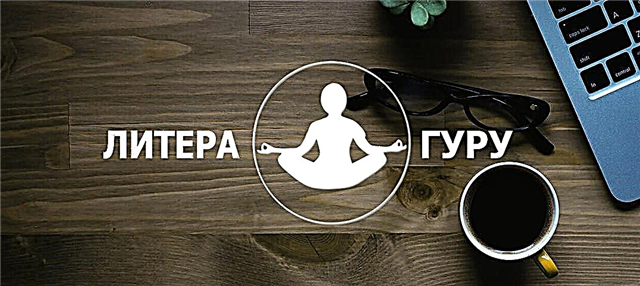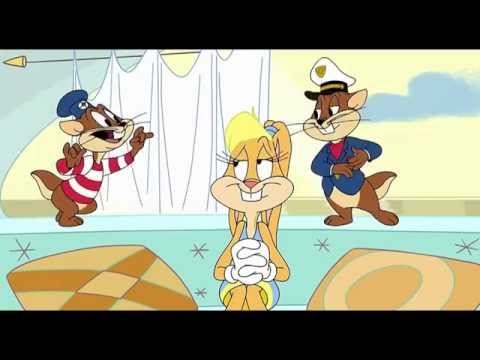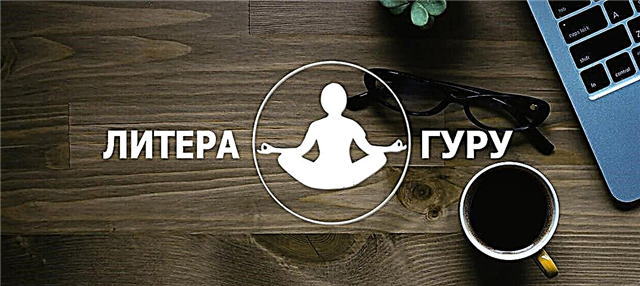Organization of the creative process
Too many ideas are just as dangerous as ideological “drought”. The habit of jumping from one idea to another distributes energy horizontally, not vertically. As a result, in order to move forward, you are forced to wage an unnecessary struggle.
Organization is the main force in creating promising ideas. When giving out an idea, you should always strive for action. Brainstorming should begin with the formulation of a specific goal.
How to make project management effective
Review your management method. Do not use other people's notes, prepare working materials yourself. For each idea, it is necessary to outline work steps. Everyone should have their own idea of them: when tasks are written with their own hands and supplemented with their own notes, they are more understandable and more likely to be completed.
Do not waste your energy on detailed notes.
When drawing up an action plan, focus on the project as a whole. You can work not only within the walls of the office.
Treat everything as a project, so that you do not have to - preparing for the move or buying a new car.
When you consider your classes as projects, you can break them down into primary components.
- Work steps are specific actions that slowly move you forward.
- Additional materials - handouts related to the project, sketches, notes, minutes of meetings that you could contact for help.
- Secondary tasks are considerations that at the moment do not have practical value, but can find it later. For example, some idea that you want to offer the client when the necessary budget appears.
The design method translates ideas and thoughts into the plane of active actions.
Work steps
- The work step should be formulated clearly and concisely, starting with a verb.
- Always record work steps.
- An ownerless work phase will never be completed. Each work step must belong to or be assigned to someone.
- Workflow management is based on its type. There are three types of stages: delegated, future and pending.
- Promote a culture of action.
- Give yourself pleasure. “Attractive things work better.” Folder color, paper quality, and other irrelevant things can actually increase your productivity.
Minor Tasks
- Find a place for secondary tasks.
- Create a ritual dedicated to secondary tasks. Browse the folder with secondary tasks regularly. Set aside a day for the monthly “review of secondary tasks.”
Additional materials
They need to be stored, not idolized.
- Excess materials interfere with active action.
- Use the chronological principle when storing (if important, save, make notes and create an archive).
Application of the design method
- Work steps need to be separated from email.
- When you need to act, work interferes with personal life. Attitude to work steps should not depend on the context. The priorities are different, but managed within the same system.
- Work steps should be accepted and understood by those who are entrusted with their implementation.
- Do not solve all problems at the same time. But you can easily focus on several projects if the work steps in them are formulated and streamlined.
Save the information and catch up
Remember that during any discussion you generate ideas, and these ideas will disappear if they are not broken down into work steps.
- Having selected the most important information, outline the work steps.Immediately carry out something that does not require much effort and time.
- Work steps need to be recorded sequentially and linked to the project and specific dates.
- Place secondary tasks in a separate folder, indicating the name of the project on it.
- Minimize additional materials.
Correctly prioritize and distribute your forces. Priorities are extreme, high, medium, low and zero. Remember, the order in which you arranged the projects will allow the team to correctly distribute their creative energy and show which work stages it is worth starting with.
Find a balance between urgent and important
- Keep two lists: urgent and important.
- Choose the five most significant projects.
- Define a “focus area” for each day.
- Do not waste time on something that is not in your power. If the task needs to be completed urgently, do not worry, but break it down into work steps and challenge yourself. Having done everything possible to solve the problem, acknowledge that the rest is not in your power.
- Do not save urgent matters.
- Create a “grid of responsibility”.
- Find a time when no one bothers you.
Do not be afraid to “kill” ideas. If you learn to move faster to action, you will gain an advantage in the form of knowledge about new opportunities. But the willingness to deal with "raw" ideas will only help if you have the willpower to abandon it if necessary.
Meeting efficiency
- Do not hold meetings just because it is Monday.
- End the meeting with an overview of the recorded tasks.
- Cancel unnecessary meetings and meetings.
- Hold standing meetings.
- Do not convene meetings because of your own insecurity. True leaders always ask what the purpose of this or that meeting is, and always take into account the exceptional value of time.
- Do not stick with round numbers when planning meeting times.
Long live the restrictions! Remember: restrictions are our seat belt.
Do not be afraid of change. Remaining open to change, we still need to make sure that they occur at the right time and pursue a specific goal. Order and regularity - these are the mechanisms that help to cope with any changes.
Progress begets progress. Progress motivates us. Display signs of progress for all to see. For example, create a wall “Completed” and place on it some kind of reports on completed projects: pages from notebooks with actions marked in them, account cards with changes made to them. We all need to see positive movement and growth in order to feel confident in our creative travels.
The visual organization of space is advertising addressed to oneself. The ability of a creative person to self-organization is not granted to him by nature. On the contrary, it needs to be developed using various methods of visual stimulation.
Habitat
Involving other people in your projects, you take responsibility for the result and for the fact that the work begun will be brought to the end. Success will depend on how well you use the efforts of others.
How to use the potential of others? It is difficult to carry out the project alone. Decide who you are: a dreamer, performer or gradualist. Find a partner to complement you.
Share ideas generously
Any project managed by a single person is usually doomed to failure. If the project cannot attract the team, then something is wrong with it. Joint work on the development of ideas significantly increases their chances of gaining strength and ultimately being realized.
Benefit from Feedback
Use letters with the headings "Start", "Stop" and "Continue". Feedback is required. You must not only accept, but also seek it yourself.
The benefit that can be drawn from the feedback directly depends on how transparent your projects are. If you give other people some access to your life, they will find in it what they need. A little more openness will not only not hurt you, but also help to use the potential of others in their interests.
Work with like-minded people
- Like-minded people should not be more than fifteen.
- Set a strict meeting schedule.
- Get together often and report to each other.
- Choose a leader.
- Expand your circle with the help of the Internet.
Look for competitors. Competition strikes at the most painful place and encourages action. Look for competitors and be grateful to them.
Announce your project
When you publicly announce that you are ready to take risks in order to carry out your plan, you accumulate the so-called advantages of informed choice. These include the willingness of other people to partially share this risk with you, supporting your projects. And also, having declared publicly about the project, you will not be able to retreat because you have taken responsibility.
Coworking or why it's convenient to work together
The people around you - and this is not necessarily your boss - create an atmosphere of mutual responsibility and respect. In their presence there is no desire to exchange for nothing, but I also want to do business. Another advantage of coworking is the variety of skills.
Intuition helps find the right incentives. Work in other areas and learn from your mistakes.
How to promote yourself
Only someone who recognizes your qualifications and respects your interests will help you gain access to the necessary resources. If no one knows what you are doing and what you want to achieve, this will not happen.
“Freelance employees should spend half their time on work, the other on their promotion.” Creative people are determined to actively “sell” themselves and their brands.
Having decided to start a self-promotion campaign, do the following:
- identify your strengths and everything that sets you apart from the rest;
- Tell others about your merits.
Tune to your desired frequency to captivate others
You need to develop the ability to “tune in” to other people and help them “tune in” to you. This interaction can be fruitful if you know exactly who you are dealing with, what inspires them and what causes their fears.
It's easier to tune in to other people if you focus on the mutual benefits of communication. Determine what your audience needs, what you hope to receive from it.
Convince yourself that those who do not share your ideas. Sound pragmatism will help you with your ideas. Share ideas not only with those who are on the same wavelength with you, but also with skeptics risk averse. This will help you to avoid "ideological intoxication."
Another method is to pause between the decision to act and the actions themselves.
Do not play alone. Remember that people who work for you are not only interested in money - they dream of creative growth. Therefore, you must be a skilled mentor for your team members. Your responsibility is to involve them in everything that interests them, even if at the same time you go beyond your immediate tasks.
Leadership and creativity
The old reward system: how to get around it
Getting started with the project, you need to do the following.
- Abandon the traditional reward system. Weaning from short-term rewards, try to get rid of the desire to constantly receive external evidence of your success.
- Create a system of progressively growing rewards and incentives. You must be creative in coming up with your own set of rewards and incentives that will support you throughout your creative research.
- Do not neglect moral encouragement.
Motivate employees through the game.The game simplifies collaboration and attracts people. The game is the most important tool for the leader. Relying on the game and pleasure, a person is able to generate ideas and bring them to life. Here his characteristic desire for entertainment helps.
Engage professionals in your quest
Forming a team of talented enthusiasts is one of the most significant challenges facing leaders. Effective managers will try to assess the ability of a potential team member to take the initiative. Enthusiasts energize the whole team.
Help employees improve their skills
Flexibility helps increase productivity. Three rules for building a creative process.
- When the brain is tired, it works poorly.
- Ideas come when they come.
- Coercion makes you hate your job.
Instead of working with an eye on the clock, creative teams should build trust. Evaluate labor by the result, not by the time spent at work. Employees themselves are authorized to decide when and where to work on common tasks.
People like it when they respect their opinions and represent a certain independence. The success of working offline depends on how accurately the goals are formulated and how regularly they are updated and adjusted.
If in doubt about the team, pay attention to its mood.
- Are you using the incentives?
- Does every member of the team understand the task assigned to him?
- Are they able to solve it?
In such situations, it is useful to hold ten-minute standing meetings or put up a list of urgent matters for public display.
Do not seek consent at all costs
The project manager can compromise on a number of details, but he must firmly stand his ground when it comes to matters of principle.
From the very first day, the leader has the task of captivating the team, causing a sincere desire to participate in the implementation of the plan.
The project manager must be able to persistently and consistently motivate the team so that they put forward ideas and strive to bring them to life, take care of the growth of their employees and be attentive to their creative potential.
Copyright, or who owns the idea
Excite, charge people with your plan - this is only the first stage of the transfer of ownership. The second and much more challenging stage is to empower the members of the group to independently promote the idea, instead of meticulously controlling their every move. The manager must recognize that it is more profitable to cede part of his right to an idea than to endlessly convince employees of his innocence.
Leaders speak last
Creativity involves engagement. Instead of showing how much more experienced and important you are, keep quiet and let all the staff speak. Before saying anything, ask questions and listen carefully to the answers.
The sooner you begin to understand yourself, the more balanced and sound your judgments will be.
Do not be afraid of uncertainty. Patience helps us to avoid rash decisions that are made under the influence of emotions. You need to use your time wisely and not try to act too fast.
Failures Serve Business
If something goes wrong, try to answer the questions.
- What external circumstances can explain the failure?
- What factors jeopardized your plans?
Avoid dreamy narcissism. Dreamy narcissism - this is the erroneous opinion of the leader that he is an exception to the rule.
Consider yourself an entrepreneur. Entrepreneurs are not those who have better ideas. These are people who agree not to hesitate to jump off a cliff. What matters most is your ability to keep moving and push your ideas forward, step by step.
Become a dissenter.You must gain trust when others question your abilities. The only true path to something new is not marked on the map. Let the pressure build up on you, you should not go off course.
Count down
The concept of the countdown is simple: how would you dispose of yourself knowing the exact end date of your life?
Each of us has his own term, but we are clearly not burdened by the countdown. The “ticking of the clock” should make you realize your ideas. When there are opportunities, they need to be used, because time is melting, it is becoming less and less.











